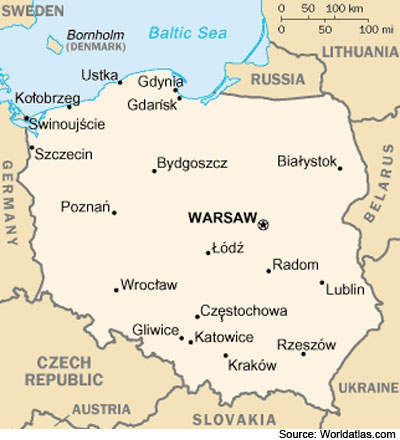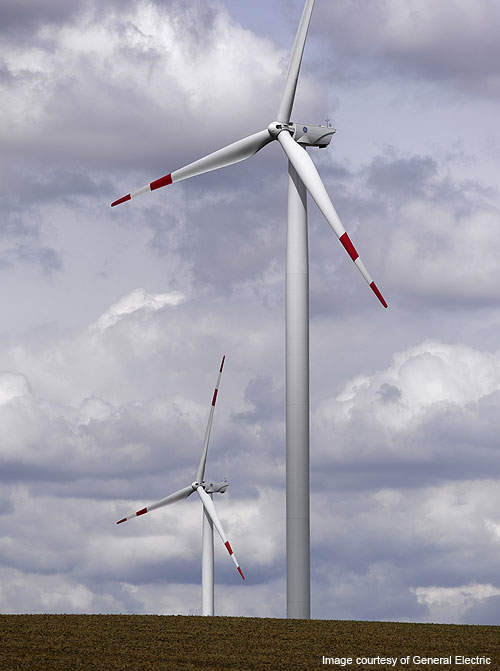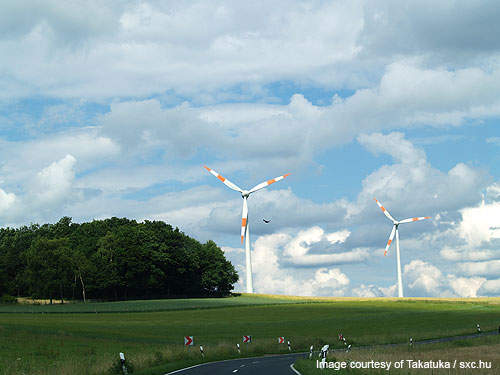Nekla Wind Farm is located in the Wielkopolska region of Poznan in Poland. The €100m ($139m) project is owned by a Polish affiliate of E.ON Climate and Renewables. The project was commissioned in October 2010.
The wind farm was built as part of E.ON’s medium-term plan to increase the share of renewable energy to 10GW by 2015. The company had installed a renewable capacity of 400MW in 2007, which now currently stands at 3,500MW. This is planned for increased to 4GW by the end of 2010.
Electricity generated by the farm is sufficient to power 45,000 households. The project will help Poland in meeting its target to produce 15% of its energy through renewable sources by 2020.
Nekla wind farm details
The Nekla wind farm is installed with 21 GE 2.5MW turbines able to generate up to 52.5MW. The 21 turbines are located at seven sites in the Wielkopolska region.
The turbines are designed based on the GE’s widely used 1.5MW wind turbine. Each of the turbines has three blades with a rotor diameter of 100m, capable of producing energy even during low or non-wind periods. The turbine has a sweep area of 7,854m² and a hub height of 100m.
The variable speed technology integrated in the turbines controls wind power by maintaining precise torque and pitch regulation during changing wind and grid connections.
The system also caters to many emerging grid code requirements of wind power plants.
Technology
The GE 2.5MW technology can be fitted to towers with a hub height of 100m, 85m and 75m. It can be installed even at sites with most stringent noise restraints.
The turbine is built based on the Design for Reliability (DFR) methodology, which follows a sequential process of goal setting, system modelling, design, prediction, testing, evaluation, and product audit.
The main shaft has a double bearing that transmits loads to the tower through a bedplate, minimising gearbox thrust and bending loads. The gearbox function depends on the torque load controlled by the converter to stabilise the load.
A permanent magnet generator and a full power converter situated in the lower section of the turbine tower form part of the electrical system design. The converter cooling system reduces the number of moving parts in the turbine to ensure reliability and passive cooling with the help of the wind that powers the turbine simultaneously.
GE Technology supports the grid through the WindCONTROL system, which is similar to conventional power plants. The system features maximum power limits, a power-frequency droop, power ramp rate limits and start-up / shutdown. Other special features include integrated capacitor / reactor bank control, and line drop and voltage drop compensation.
The technology supplies reactive power to the grid when required by regulating voltage and stabilising weak grids. The integrated VAR / voltage control system eliminates the need for add-on capacitors during non-wind periods.
The GE 2.5MW wind turbines feature WindFREE Reactive power technology which enables them to generate power during very low winds or in non-wind periods. The technology also helps to produce controlled reactive power, irrespective of the operating conditions, enabling smooth and fast voltage regulation.
Continuous regulation and voltage supply provides grid benefits that are not possible in conventional power generation systems.
This feature also eliminates the need for grid reinforcements and minimises electrical infrastructure investments.
Poland power market
As of June 2008, Poland had an installed wind power capacity of 1,000MW. Poland produces electricity mostly through hard coal but has strong wind potential.
European Union legislation and the emphasis of the Poland Government on power generation from renewable sources have set a goal to generate 15% of the country’s electricity from renewable sources by 2020.
The European Commission has increased wind power expectations for 2020 by 85% from 120GW to 222GW. It has increased this figure to 280GW for 2030 compared to 146GW as per 2008 estimates.






